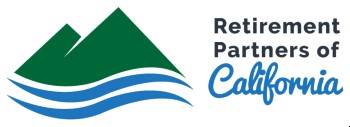Understanding 408(b)(2) and 404(a)(5) Fee Disclosures: Key Differences in ERISA Regulations
 Introduction: The Employee Retirement Income Security Act (ERISA) includes two important regulations aimed at increasing transparency in retirement plan fees: Section 408(b)(2) and Section 404(a)(5). While both focus on fee disclosure, they serve different purposes and have distinct requirements. Understanding these differences is crucial for plan sponsors, fiduciaries, and participants alike.
Introduction: The Employee Retirement Income Security Act (ERISA) includes two important regulations aimed at increasing transparency in retirement plan fees: Section 408(b)(2) and Section 404(a)(5). While both focus on fee disclosure, they serve different purposes and have distinct requirements. Understanding these differences is crucial for plan sponsors, fiduciaries, and participants alike.
408(b)(2) Fee Disclosure:
Purpose: The 408(b)(2) regulation, often called the “Service Provider Fee Disclosure,” is designed to help plan fiduciaries assess the reasonableness of contracts or arrangements with service providers.
Key Features:
- Recipient: Disclosure is made to plan fiduciaries (typically the employer or plan sponsor).
- Timing: Must be provided before entering into a contract and upon changes.
- Content: Includes detailed information about services, fiduciary status, and all direct and indirect compensation received by service providers.
- Covered Providers: Applies to certain service providers who expect to receive $1,000 or more in compensation.
Objective: To ensure that plan fiduciaries have the information necessary to make informed decisions about service providers and to identify potential conflicts of interest.
404(a)(5) Fee Disclosure:
Purpose: The 404(a)(5) regulation, known as the “Participant Fee Disclosure,” aims to provide plan participants with information about the fees and expenses associated with their retirement plan.
Key Features:
- Recipient: Disclosure is made to plan participants and beneficiaries.
- Timing: Must be provided annually and upon request.
- Content: Includes general plan information, administrative expenses, individual expenses, and investment-related information.
- Format: Requires a comparative chart of investment options, including performance data and fee information.
Objective: To empower participants to make informed decisions about their retirement savings and investments.
Key Differences:
- Target Audience:
– 408(b)(2): Plan fiduciaries
– 404(a)(5): Plan participants and beneficiaries
- Level of Detail:
– 408(b)(2): More comprehensive, including indirect compensation and revenue sharing arrangements
– 404(a)(5): More focused on direct costs to participants and investment option comparisons
- Frequency:
– 408(b)(2): Initially and upon changes
– 404(a)(5): Annually and upon request
- Scope of Information:
– 408(b)(2): Covers all plan-related services and their costs
– 404(a)(5): Primarily focuses on fees that affect participant accounts
- Purpose:
– 408(b)(2): To assist fiduciaries in evaluating service providers
– 404(a)(5): To help participants understand and compare their investment options
- Regulatory Focus:
– 408(b)(2): Emphasizes the fiduciary’s duty to ensure reasonable arrangements
– 404(a)(5): Stresses participant rights to information
Importance of Both 401k Fee Disclosures:
While serving different purposes, both disclosures work together to create a more transparent retirement plan ecosystem. 408(b)(2) ensures that plans are structured with reasonable fees, while 404(a)(5) enables participants to understand how these fees impact their individual accounts.
My thoughts for you as a 401k Plan Sponsor:
Both of these 401k retirement plan fee disclosures have come a long way in educating plan sponsors and participants about the fees they are paying in their 401k retirement plan. Although they have improved, it can still be confusing to read them. They are not uniform in nature and each 401 recordkeeper designs them differently.
It is imperative that you understand your 401k plan fees. It’s required under ERISA. So if you need help, please reach out. I’m happy to help you understand them.
Conclusion:
Understanding the distinctions between 408(b)(2) and 404(a)(5) fee disclosures is crucial for proper retirement plan management. Plan sponsors must ensure compliance with both regulations to fulfill their fiduciary duties and provide participants with the information they need to make informed decisions. Together, these disclosures promote transparency, help control costs, and contribute to better outcomes for retirement plan participants.
Next step: Get a 401k Fee Benchmark Review. Book a meeting below.
Retirement Partners of California Can Help!
We’ll design an Employee Financial Education Plan to help improve your 401k participant results.
Disclosures, Sources, and Footnotes
This information was developed as a general guide to educate plan sponsors, but is not intended as authoritative guidance or tax or legal advice. Each plan has unique requirements, and you should consult your attorney or tax advisor for guidance on your specific situation. In no way does advisor assure that, by using the information provided, plan sponsor will be in compliance with ERISA regulations.
Tracking #640058






